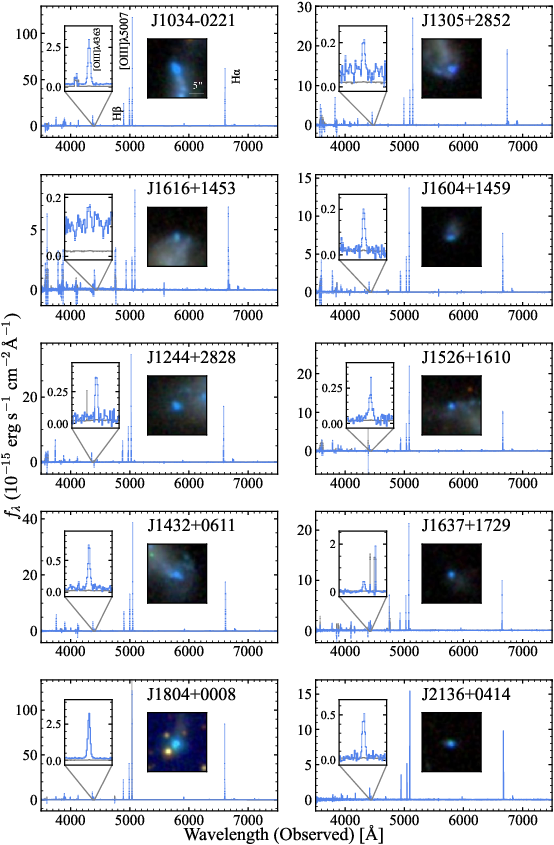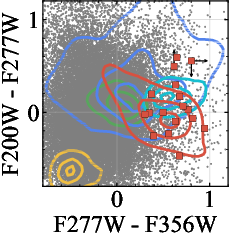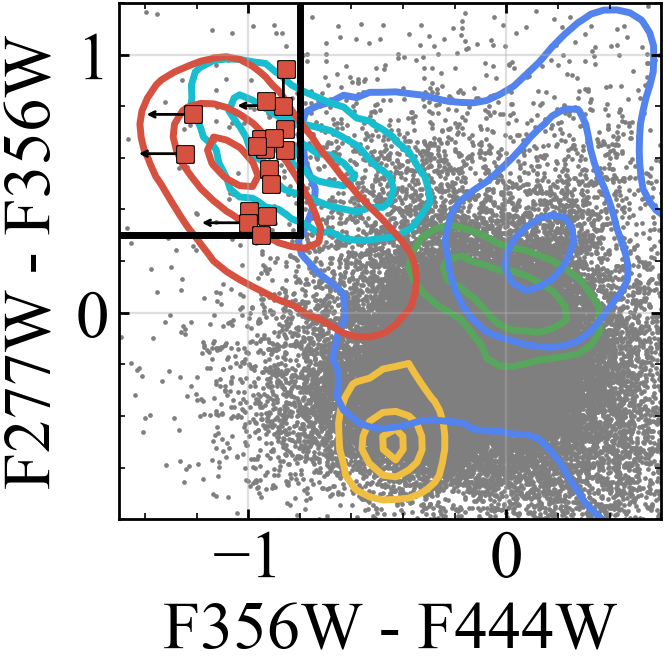Achievements & Publications
EMPRESS. XI. SDSS and JWST Search for Local and z 4-5 Extremely Metal-poor Galaxies (EMPGs): Clustering and Chemical Properties of Local EMPGs
Nishigaki, Moka, Ouchi, Masami, Nakajima, Kimihiko, Ono, Yoshiaki, Rauch, Michael, Isobe, Yuki, Harikane, Yuichi, Narita, Kanako, Zahedy, Fakhri, Xu, Yi, Yajima, Hidenobu, Fukushima, Hajime, Hirai, Yutaka, Kim, Ji Hoon, Inoue, Shigeki, Kusakabe, Haruka, Lee, Chien-Hsiu, Nagao, Tohru, & Onodera, Masato
Abstract
We search for local extremely metal-poor galaxies (EMPGs), selecting photometric candidates by broadband color excess and machine- learning techniques with the SDSS photometric data. After removing stellar contaminants by shallow spectroscopy with Seimei and Nayuta telescopes, we confirm that three candidates are EMPGs with 0.05-0.1 Z ⊙bydeepMagellan∕MagEspectroscopyforfaint[OIII]λ4363 lines. Using a statistical sample consisting of 105 spectroscopically confirmed EMPGs taken from our study and the literature, we calculate the cross-correlation function (CCF) of the EMPGs and all SDSS galaxies to quantify environments of EMPGs. Comparing another CCF of all SDSS galaxies and comparison of SDSS galaxies in the same stellar- mass range (107.0-108.4 M ⊙),wefindnosignificant(> 1σ) difference between these two CCFs. We also compare mass-metallicity relations (MZRs) of the EMPGs and those of galaxies at z ~ 0-4 with a steady chemical evolution model and find that the EMPG MZR is comparable with the model prediction on average. These clustering and chemical properties of EMPGs are explained by a scenario of stochastic metal-poor gas accretion on metal-rich galaxies showing metal- poor star formation. Extending the broadband color excess technique to a high-z EMPG search, we select 17 candidates of z ~ 4-5 EMPGs with the deep (≈30 mag) near-infrared JWST/NIRCam images obtained by ERO and ERS programs. We find galaxy candidates with negligible [OIII] λ λ 4959,5007 emission weaker than the local EMPGs and known high-z galaxies, suggesting that some of these candidates may fall in the range of 0-0.01 Z ⊙,whichpotentiallybreaksthelowestmetallicitylimitknowntodate.






 和 英
和 英